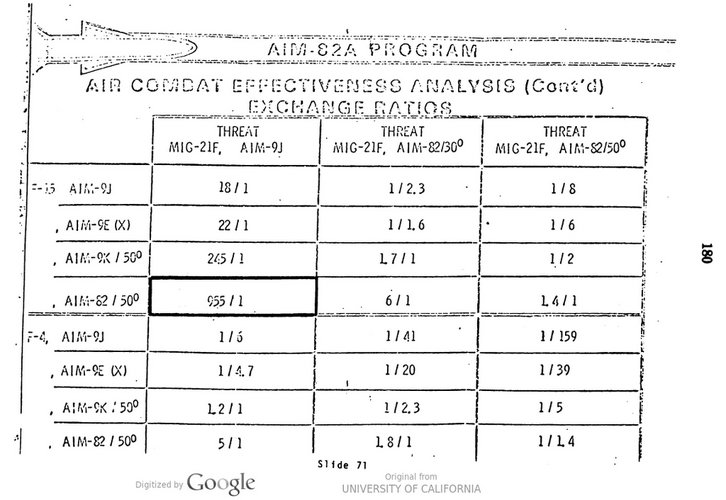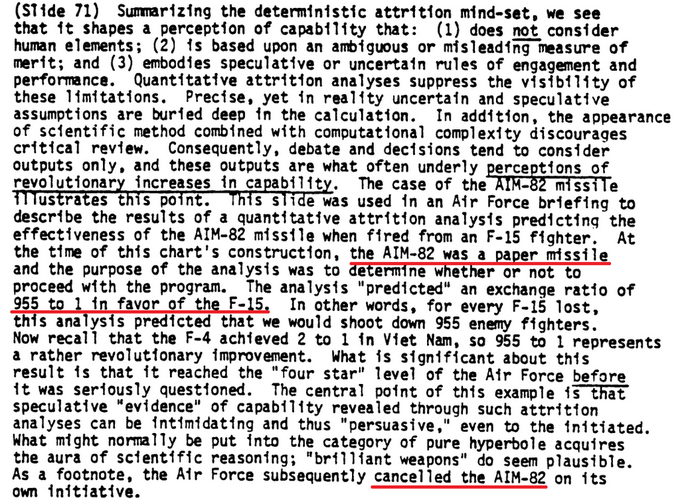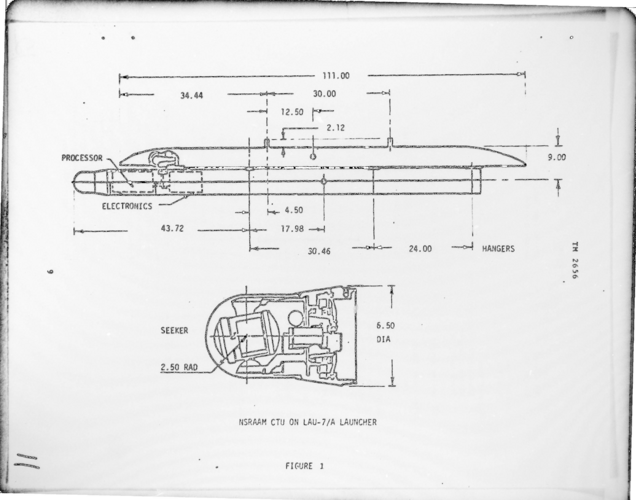- Joined
- 27 December 2005
- Messages
- 17,744
- Reaction score
- 26,337
Regarding the AIM-82 and Agile, we recognize that these missiles are both addressed to the same requirement. The services have been asked to work together to determine how best to develop a new short range dogfight missile for joint use and report back to OSD this sum mer. An interim missile - for example, Super Sidewinder - is also part of this consideration. I have also set up an ad hoc committee on air -to air missiles with OSD and service representation to look into all the above areas. Their report is due to me in June.
DEPARTMENT OF DEFENSE APPROPRIATIONS FOR 1971SHORT - RANGE AIR - TO - AIR MISSILES
Mr. Mahon .
Are new short -range air -to -air " dogfight ” missiles re quired for the Navy and the Air Force? Dr. FOSTER. Yes, new short - range missiles are required for the Navy and the Air Force. Analysis of SEA air combat revealed significant deficiencies in the AIM AD Falcon , AIM - 9B Sidewinder, AIM - 7D , and AIM -7E Sparrow missiles. These all had kill ratios of ___. Only the Navy AIM -9D Sidewinder came anywhere near meeting expectations and its kill ratio was ___ As a result of intensive review arising from SEA experience a series of evolutionary improvements was instituted to increase missile reliability and capability against —targets. Also , in response to Secretary Packard's direction in approving DCP No. 15 for the new short-range missile, the Navy and Air Force are examining a further interim step However, all the studies reveal that the Sidewinder growth is limited to the point that a new short-range missile of higher capability than can be provided by Sidewinder is warranted. The Navy Agile and Air Force AIM-82 concepts are geared to meet these needs. The Agile requirements are but both represent advances be yond Past experience has shown that new missiles take 8 to 10 years to develop. We doubt are exceptions to this rule. Thus, we are seriously examining another evolutionary improvement of Side winder to until one of the missiles is available. In order to limit further missile proliferation, we desire that any new missile should be developed for joint use, and are pursuing these ends in our present studies. To provide a cohesive guiding force to this effort, I have set up an Ad Hoc Committee on AAM, chaired by Mr. A. Simon of O.D.D.R. & E. This committee has OSD, Navy, and Air Force membership and will make its report to Secretary Packard this summer.
Department of Defense Appropriations for 1971
www.google.co.nz
Development Concept Paper (DCP) 15 is available at NARA:
Last edited:



